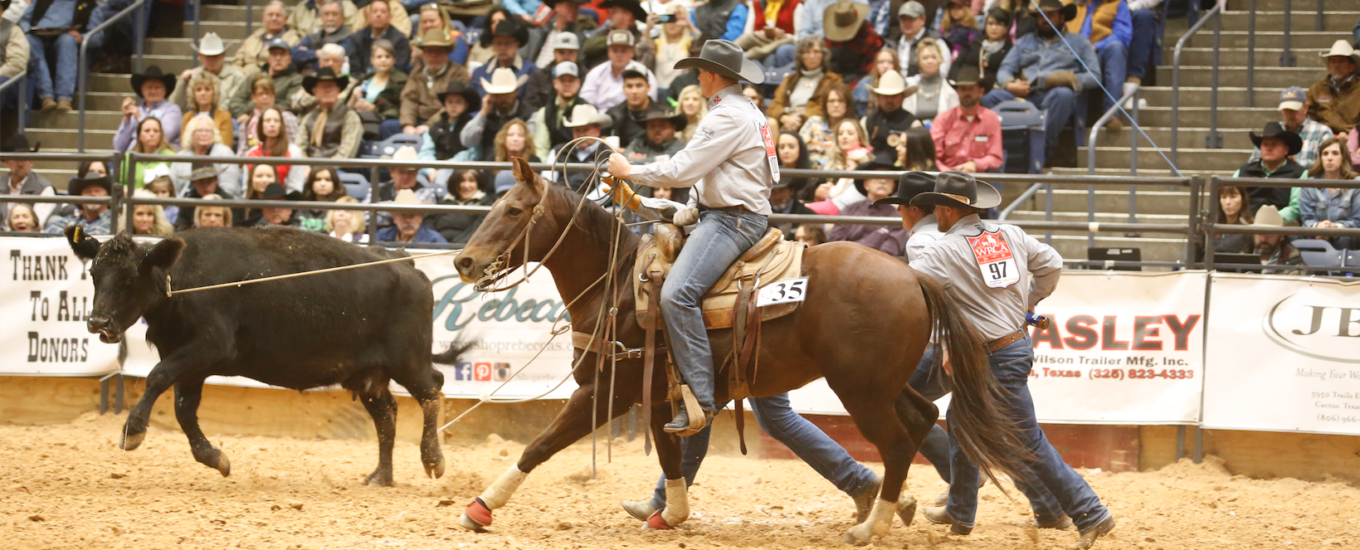Top Reasons to Be a Cowboy | #9: The Roping
Watching any WRCA rodeo, a spectator has the chance to see exceptional roping. In the stray gathering, for instance, when a top hand on his best horse falls in behind a fresh yearling steer, takes two swings, throws his loop around the steer’s neck—the tip curling enough to slap the critter’s hip—and pulls the slack out, bringing everything to a stop in under 10 seconds—you know you’ve seen an expert at work.
And for anyone who’s had the experience of tangling their target up in a length of nylon knows what a thrill it is to accomplish that feat: subduing an animal that outweighs a man tenfold. How remarkable is it that man has developed a way to quickly, easily, and safely bring the biggest beasts of the range under their control?
The famed Western author John R. Erickson wrote a book called “Catch Rope: The Long Arm of the Cowboy.” In the opening chapter, he muses about the origins of roping. It’s an incredibly interesting question. How and where did roping begin?
Erickson’s conclusion—and a very accurate one, I think—is that man has been employing the idea of a “noose” from the earliest days of his existence for handling livestock. Over time, it’s usage probably evolved from merely putting a rope around a critter’s neck to using a stick to do the same to one that’s been known to kick, then maybe to throwing the noose on one that won’t come anywhere near, and eventually throwing it from horseback.
Today, roping is an essential part of the cowboy trade. If you can’t rope, you ain’t no cowboy, somebody on the internet might say. It’s a quick and humane way to brand calves, doctor yearlings, and even manage wild cows and bulls.
It’s also a multi-million-dollar recreation industry. Our heroes are men handy with a rope, like Trevor Brazile and Clay O’Brien Cooper. Team roping literally awards millions every year, and thus drives the horse market, and subsequently the feed, tack, trucking, and fashion industries.
Why? Because it’s a thrill. There’s just no other way to describe the activity. Probably the closest mainstream sport it compares to is golf. Becoming proficient is a years-long process and no matter how great you become, there are always places to improve. Where roping differs from golf, though, is the variables of livestock. Roping the dummy on the ground is one thing, but add in riding and training a horse to do what you need it to is an entirely new variable.
Then, of course, is the target, which doesn’t want to cooperate. Learning to read a cow, anticipate its actions, and handle it properly is no small task.
When it goes right, when you become proficient, roping is such—to borrow a millennial generation phrase—an alpha skill. And that’s why it’s the ninth-best reason to be a cowboy.


